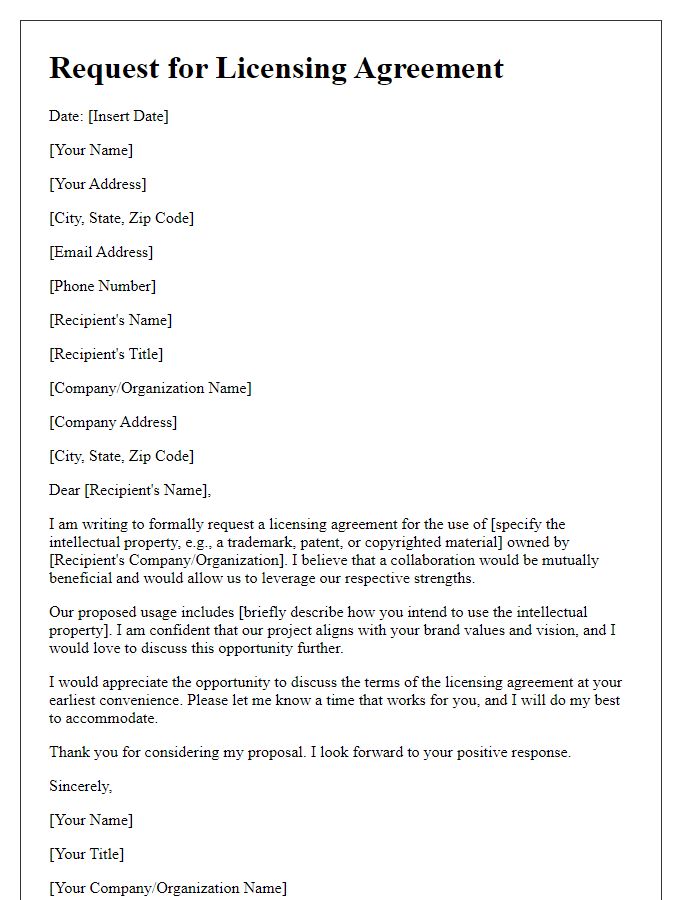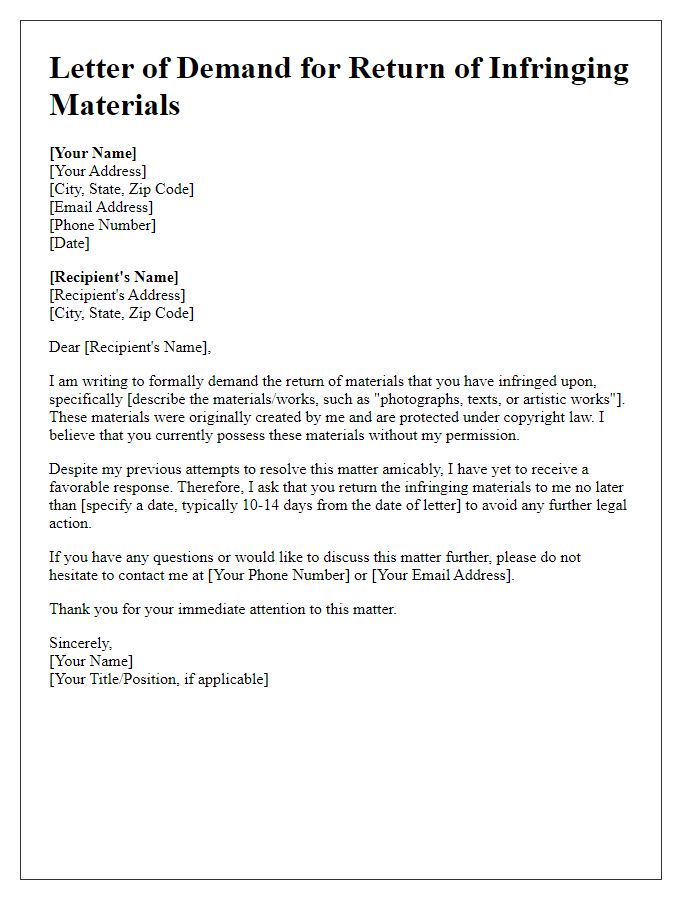Are you concerned that someone might be infringing on your intellectual property? It's a common worry for creators and innovators who pour their heart and soul into their work. Understanding how to address these issues is crucial for protecting your rights and maintaining the integrity of your ideas. If you're looking for effective ways to communicate your concerns, keep reading to explore our comprehensive letter template for intellectual property infringement.

Identification of Infringed Work
The identification of infringed work involves pinpointing specific intellectual property assets that have been unlawfully used or replicated. These assets could include copyrighted materials such as literary works (books, articles), artistic works (paintings, photographs), or software programs. For instance, a copyrighted book published by Penguin Random House in 2021 might be copied without permission, violating the author's exclusive rights. Registered trademarks such as the Nike Swoosh, a symbol associated with quality athletic footwear and apparel, could also be misappropriated in unauthorized merchandise. Patent infringement could occur with a unique technology developed by Apple Inc., where competing devices replicate patented features without consent. Proper identification requires comprehensive documentation detailing the infringement, including URLs, product samples, and evidence of use in commercial contexts, ensuring clear attribution to the original creator's rights.
Details of Infringing Activity
Intellectual property infringement often occurs when unauthorized individuals or entities use, reproduce, or distribute a protected work without permission. This includes but is not limited to trademarks, copyrights, or patents. The infringing activity, in this case, pertains to the unauthorized reproduction of copyrighted material, specifically under the United States Copyright Act. The infringer, identified as [Infringing Entity Name], has been distributing our original work, [Title of Work], originally published in [Publication Date], across various platforms, including social media and unauthorized websites. This activity has been documented, including evidence of postings dated [Document Dates], showing clear use of our protected content without any licensing agreement or proper attribution. Furthermore, [Location of Infringing Activity, e.g., "Commonwealth of Massachusetts"] serves as the jurisdiction where this infringement is taking place, intensifying the need for immediate remediation to protect our intellectual property rights.
Legal Basis for Ownership
Intellectual property infringement occurs when someone else uses, reproduces, or distributes a creation (such as art, music, or inventions) without permission from the owner, violating legal rights granted under the intellectual property laws. Ownership of intellectual property is typically established through registration (for patents and trademarks) or by the original creation (for copyrights). Legal bases for ownership include statutory protections outlined in the U.S. Copyright Act of 1976, the Lanham Act for trademarks, and the Patent Act, which secures exclusive rights for inventors. Notable cases, such as Campbell v. Acuff-Rose Music, Inc. (1994) and Apple Inc. v. Samsung Electronics Co., Ltd. (2012), illustrate the complexities of infringement claims and the legal standards applied to protect intellectual property rights in numerous jurisdictions.
Demands for Action
Intellectual property infringement occurs when a party uses, reproduces, or distributes a protected work without permission, which violates the copyright laws established in numerous jurisdictions worldwide. The consequences of such infringement can be severe, often leading to significant financial losses for the rightful owner and potential legal ramifications for the infringer. Businesses, like tech companies, must protect their proprietary software or patented designs, particularly in competitive environments like Silicon Valley. Infringement cases can involve reputable entities and large sums, necessitating clear communication regarding demands for action, such as ceasing unauthorized use and compensatory financial restitution. The Digital Millennium Copyright Act (DMCA) established in the United States provides a legal framework to address online copyright violations, making it an essential tool for intellectual property protection in the digital age.
Consequences for Non-Compliance
Intellectual property infringement can lead to significant legal consequences, including monetary damages (often in the range of thousands to millions of dollars), injunctions (court orders preventing further use), and reputational harm. Entities such as corporations, individuals, or other organizations involved in violations may face lawsuits filed in jurisdictions like federal or state courts, adding to financial burdens. Regulatory bodies may impose fines for non-compliance with copyright, trademark, or patent laws, potentially crippling business operations. Repeat offenders may encounter stricter penalties, including statutory damages that can exceed $150,000 per infringement. Ongoing infringement may also result in criminal charges, particularly in cases of willful misconduct, subjecting violators to imprisonment or hefty fines. Engaging legal counsel is crucial for navigating these complex issues and protecting intellectual property rights.
Letter Template For Intellectual Property Infringement Samples
Letter template of formal complaint regarding intellectual property theft.

Letter template of request for licensing agreement over intellectual property.

Letter template of warning about unauthorized use of intellectual property.











Comments